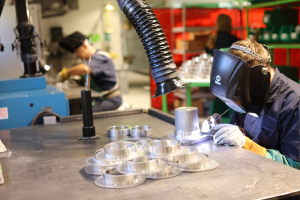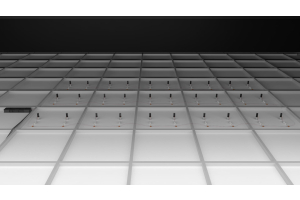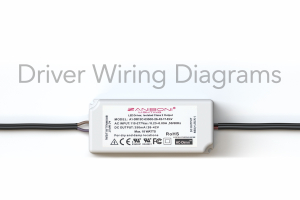
By Luca Masella M.S.

In order to attain specific features, such as color and heat resistance, iron is frequently employed as an addition in the manufacture of glass. Depending on the lighting application, iron can give glass a subtle greenish hue that may or may not be acceptable.
In general, soda-lime glass, a common form of glass that incorporates numerous additives, including iron oxide, is often used to make lighting lenses. Depending on the necessary glass properties and the manufacturer's standards, the iron concentration of soda-lime glass can range from about 0.1% to 0.7% by weight.
Issues with high iron lenses
High iron lenses may be deemed unfavorable in certain lighting conditions for the following reasons:
Color distortion: Glass with a high iron content may have a greenish tinge, which may distort the true color of the led light. This tint can be especially problematic in settings like photography, art galleries, or shop displays where precise color representation is crucial.

Reduced light transmission: It is caused by iron in the glass, which can absorb and scatter some of the light entering the lens. Reduced lighting efficiency and decreased overall light output may result from this.
Heat absorption: Iron absorbs and holds onto heat, which can lead to the lens overheating when used for an extended period of time. This may cause thermal stress in high-temperature illumination applications and perhaps harm the lens.
Light scattering and glare: Lenses with a high iron content may scatter light more than lenses with a lower iron content, which can result in higher glare and less control over the amount of light in specific applications.
Can low iron lenses be connected to human wellbeing?
Low iron lighting lenses have a number of associations with good health, particularly in settings where lighting quality is important.
Higher light transmission and accurate color reproduction are made possible by low-iron lenses. Better lighting quality can improve comfort, lessen eye strain, and foster a more pleasant and productive environment in places where people spend a lot of time, like homes, offices, and commercial organizations. Low iron lenses serve to lessen glare, which can be an eyestrain and discomfort- causing cause of light scattering. This is crucial since glare can have a negative effect on people's ability to concentrate and feel generally well-adjusted in places like businesses, schools, and healthcare facilities.
Although the use of low iron lighting lenses may not be the only factor in determining a person's level of well-being, it is a crucial element in the design of lighting systems that encourage relaxation, efficiency, and emotional well-being in a variety of settings. Further promoting human well-being on a larger scale, effective lighting solution design and execution can help make lighting more sustainable and energy-efficient.
How to make sure the lenses in your lighting fixture are low iron glass lenses
The terms "low iron," "extra clear," and "ultra-clear," which are frequently used to denote glass with reduced iron concentration, should be sought for.
To recognize what level of iron is in the lens compare the one you might consider against samples of conventional glass side by side, if at all possible. Compared to conventional glass, low iron glass should appear clearer and have less of a greenish hue.
The iron percentage in glass to be considered low iron typically falls below 0.1% by weight.
Zaniboni glass lens specification
Since ferric oxide, one of the main iron oxides, is present at incredibly low levels in Zaniboni illumination, the lenses are highly clear. The ferric oxide content in a typical (greenish-looking) glass is roughly 0.1%, however it is as low as 0.01% in Zaniboni lenses, giving them an extremely clear and translucent appearance without changing the hue of the illumination. Without any alterations to the illumination, the fixture will have the highest lighting quality possible, enhancing the color and finishes of all the materials in the immediate vicinity thanks to the high CRI Zaniboni led chip.





